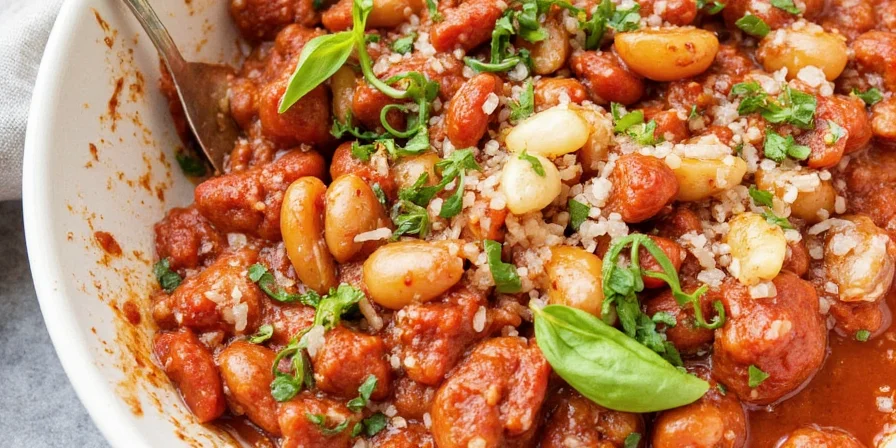Spice It Up the Healthy Way: Italian Style!
Welcome, spice explorers! Whether you're a seasoned chef or a weekend cook with a passion for flavor, this guide is your golden ticket to creating healthy Italian dishes that are bursting with taste. Today, we’ll dive deep into how to use spices like an Italian nonna (that’s grandma in Italian), without sacrificing health or flavor.
Why Italians Know How to Spice it Right
Italy may not be known for fiery heat or tongue-tingling spice, but its culinary traditions are rich with herbs and seasonings that elevate every dish. From oregano to basil, rosemary to chili flakes — these ingredients pack a punch of flavor without the need for heavy fats or sugars.
The Italian Spice Pantry: Your Flavor Arsenal
Let’s start by exploring some essential spices and herbs that should live in every Italian kitchen:
- Oregano: Earthy, aromatic, and bold — perfect for tomato sauces and grilled veggies.
- Basil: Sweet, fresh, and fragrant — often used fresh in salads and pasta dishes.
- Rosemary: Woody and intense — ideal for roasted meats and potatoes.
- Thyme: Versatile and subtle — works well in soups, stews, and marinades.
- Fennel Seeds: Anise-like flavor that’s essential in Italian sausage and breads.
- Red Pepper Flakes: Adds heat without overwhelming — use sparingly!
Top 7 Healthy Italian Cooking Tips Using Spices
Here's how to make your Italian meals as nutritious as they are delicious:
- Use Fresh Herbs When Possible: Fresh basil, parsley, and oregano add more vibrant flavor than dried versions and come loaded with antioxidants.
- Skip the Salt (Mostly): Rely on garlic, lemon zest, and spices instead of salt to enhance natural flavors.
- Roast Veggies with Rosemary and Thyme: A drizzle of olive oil plus these herbs makes even zucchini taste divine.
- Make Your Own Spice Blends: Avoid store-bought mixes with additives — blend your own Italian seasoning using equal parts oregano, basil, thyme, and marjoram.
- Add Fennel Seeds to Breads and Sausages: They’re anti-inflammatory and give an authentic Italian touch.
- Finish with Lemon Zest and Black Pepper: This dynamic duo brightens up any dish instantly.
- Use Chili Flakes Instead of Butter: Forgo creamy sauces — spice it up naturally with just a pinch of red pepper.
Healthy Italian Spice Comparison Table
| Spice/Herb | Flavor Profile | Health Benefits | Best Used In |
|---|---|---|---|
| Oregano | Earthy, robust | Antioxidant, antibacterial | Tomato sauces, pizza |
| Basil | Sweet, fresh | Anti-inflammatory, rich in Vitamin K | Pesto, caprese salad |
| Rosemary | Woody, piney | Improves digestion, memory-enhancing | Roasted meats, potatoes |
| Thyme | Mild, earthy | Antiviral, supports respiratory health | Stews, roasted veggies |
| Fennel Seeds | Anise-like, sweet | Anti-inflammatory, aids digestion | Breads, sausages |
| Red Pepper Flakes | Spicy, bold | Boosts metabolism, heart-healthy | Pasta aglio e olio, soups |
Spice Spotlight: Basil & Oregano — The Dynamic Duo
These two green warriors are the backbone of Italian cuisine. Let’s take a closer look at why they deserve their spotlight:
Basil
- High in vitamin K, C, and magnesium
- Contains essential oils with anti-inflammatory properties
- Ideal for summer dishes — try it fresh in Caprese salad or blended into pesto with garlic and olive oil
Oregano
- Loaded with antioxidants — more than most fruits and veggies
- Antimicrobial properties that help fight bacteria
- Perfect for adding depth to tomato-based sauces, meat rubs, and hearty stews
Visual Guide: Italian Herb Gardens You Can Grow at Home
If you’re feeling adventurous (or have a sunny windowsill), grow your own mini Italian herb garden. Here’s what you’ll need:
- A sunny spot or grow lights
- Pots or containers with drainage holes
- Soil mix with good aeration
- Seeds or young plants of basil, oregano, thyme, and rosemary
Cooking Like an Italian Grandma Without the Guilt
Traditional Italian cooking can sometimes mean loads of cheese and butter — but here’s how to keep it healthy while still tasting like Nonna made it:
- Substitute dairy with nutritional yeast or cashew cream
- Use whole grain or legume-based pastas for extra fiber and protein
- Drizzle finished dishes with high-quality olive oil instead of melting it in during cooking
- Season liberally with herbs and spices instead of salt and sugar
5 Must-Try Healthy Italian Recipes with Spice Swaps
- Spiced Tomato Pasta (Low-Salt Version): Swap out added salt for a splash of balsamic vinegar, a pinch of chili flakes, and a handful of fresh basil.
- Lemon-Thyme Roasted Chicken: Marinate chicken breasts with lemon zest, thyme, garlic, and black pepper. Bake until golden.
- Garlic & Rosemary Sweet Potato Fries: Toss wedges with olive oil, rosemary, and garlic powder. Bake until crispy.
- Chickpea Minestrone with Herbs: Load up on beans, vegetables, and a mix of dried herbs for a hearty, healthy soup.
- Fennel Seed Bread (Whole Wheat Option): Make your own loaf using whole wheat flour, fennel seeds, and sea salt on top for crunch.
Conclusion: Spice is the Soul of Healthy Italian Eating
In the world of Global Spice Traditions, Italian cuisine holds a special place for its elegant simplicity and flavor-forward approach. By harnessing the power of spices and herbs, you can enjoy all the richness of Italian food without compromising on health. Whether you're tossing pasta with fresh basil or roasting seasonal veggies with rosemary, remember: the best meals are those that nourish both body and soul — and maybe even impress your family too!
So grab your apron, dust off that spice rack, and let’s cook like an Italian with a doctorate in flavor and a minor in wellness!











 浙公网安备
33010002000092号
浙公网安备
33010002000092号 浙B2-20120091-4
浙B2-20120091-4